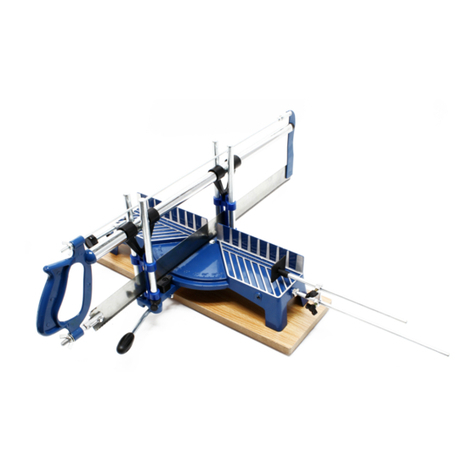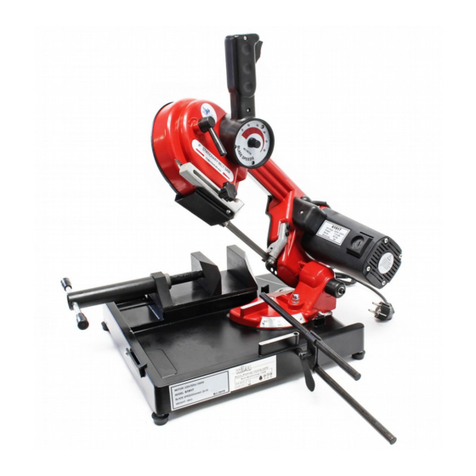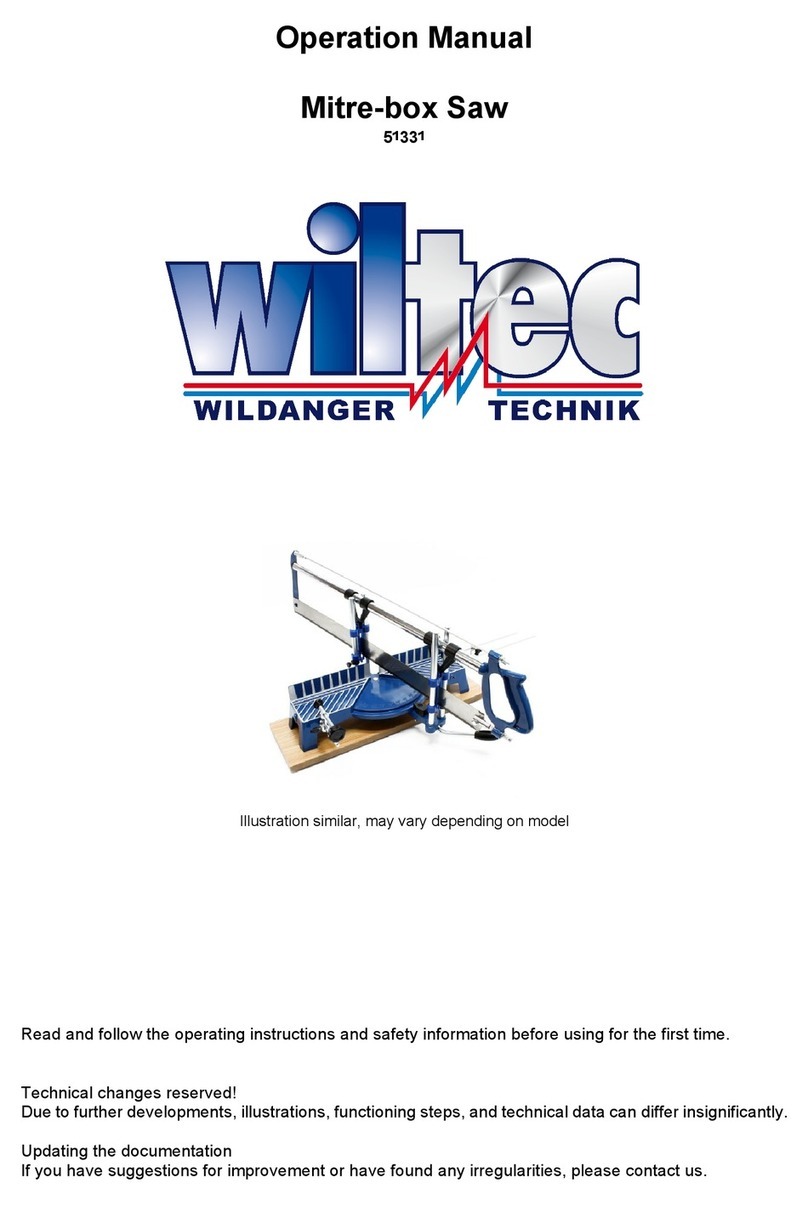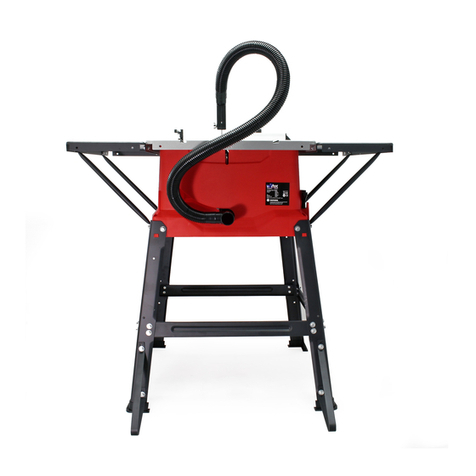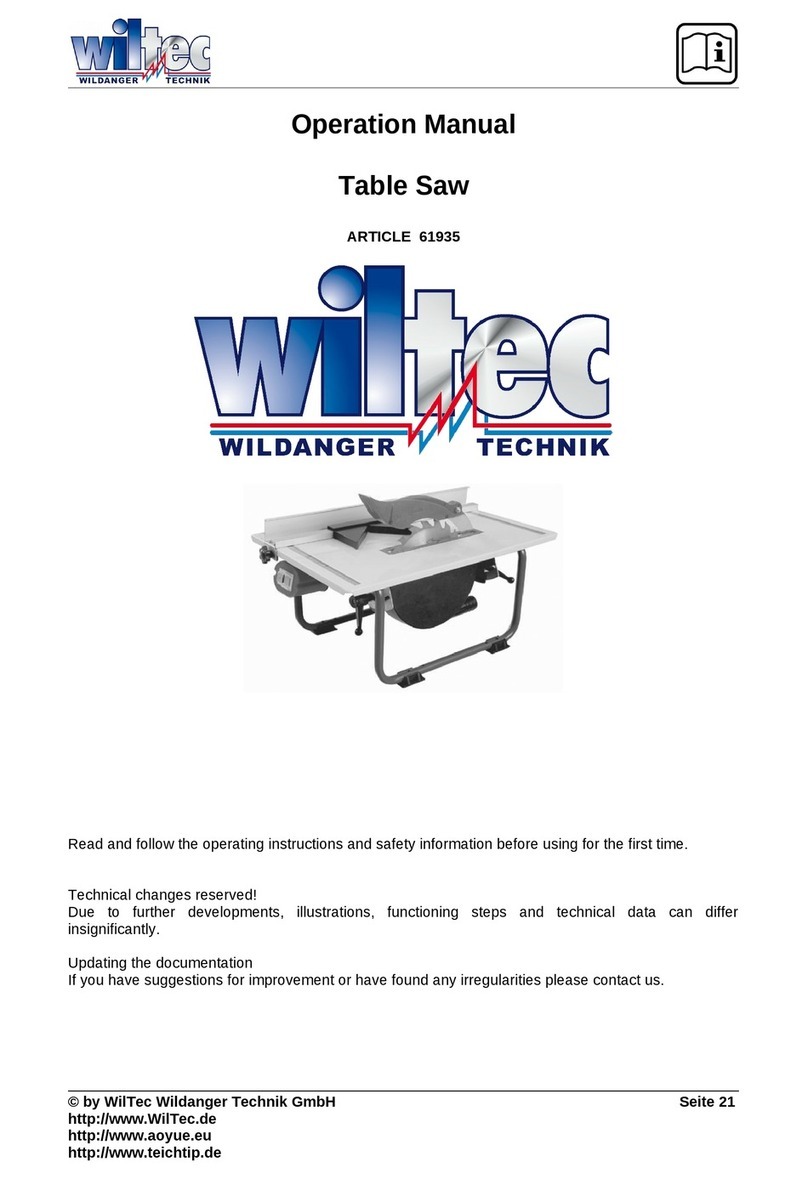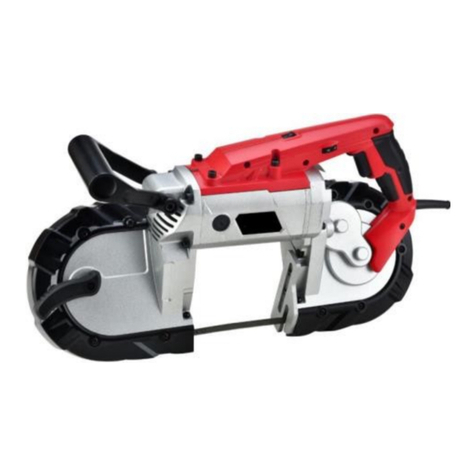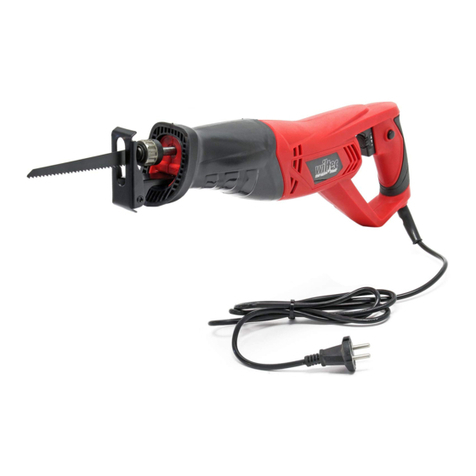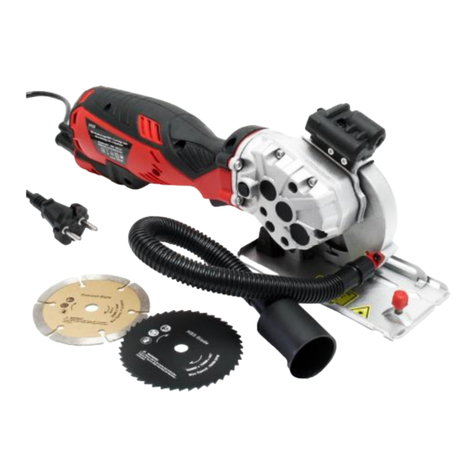– Only use saw blades for which the maximum permissible speed is not lower than the maximum
spindle speed of table saws and which are suitable for the material to be cut.
– Do not cut rebates or grooves without fitting a suitable guard, e.g. a tunnel-type guard,
over the saw table.
– Circular saws must not be used for slotting jobs (cutting grooves which end in the
workpiece).
– When transporting the electric tool, only use the transport devices. ever use the protective devices
for handling or transport.
– Make sure that the upper part of the saw blade is covered during transport, e.g. by the
protective device.
– Be sure to only use spacers and spindle rings specified by the manufacturer as suitable for the
intended purpose.
– The floor around the machine must be level, clean and free of loose particles, such as
chips and cutting residues.
– Always stand to the side of the saw blade when working with the saw.
– Do not remove any cutting residues or other parts of workpieces from the cutting zone while the
machine is running and the saw unit is not at rest.
– Make sure that the machine is always secured on a workbench or a table if at all
possible.
– Support long workpieces (e.g. with a roller table) to prevent them sagging at the end of a
cut.
– Attention! ever remove loose splinters, chips or jammed pieces of wood while the saw blade is
running.
• Switch off the machine to troubleshoot or remove jammed pieces of wood. - Disconnect the main
power plug -
• Refitting, including adjusting and measuring works, and cleaning must be carried out only when the
motor is switched off. - Disconnectthe main power plug -
• Before switching on again, ensure that keys and adjustment tools have been removed.
Warning! This electric tool generates an electromagnetic field during operation. This field can impair
active or passive medical implants under certain conditions. In order to prevent the risk of serious or
deadly injuries, we recommend that persons with medical implants consult with their physician and the
manufacturer of the medical implant prior to operating the electric tool.
SAFETY INSTRUCTIONS FOR THE HANDLING OF SAW BLADES
1 Only use insertion tools if you have mastered their use.
2 Observe the maximum speed. The maximum speed specified on the insertion tool may not be
exceeded. If specified, observe the speed range.
3 Observe the motor / saw blade direction of rotation.
4 Do not use any insertion tools with cracks. Sort out cracked insertion tools. Repairs are not
permitted.
5 Clean grease, oil and water off of the clamping surfaces.
6 Do not use any loose reducing rings or bushes for the reducing of holes on saw blades.
7 Make sure that fixed reducer rings for securing the insertion tool have the same diameter and have
at least 1/3 of the cutting diameter.
8 Make sure that fixed reducer rings are parallel to each other.
9 Handle insertion tool with caution. They are ideally stored in the originally package or special
containers. Wear protective gloves in order to improve grip and to further reduce
the risk of injury.
10 Prior to the use of insertion tools, make sure that all protective devices are properly fastened.
11 Prior to use, make sure that the insertion tool meets the technical requirements of this electric tool
and is properly fastened.
12 Only use the supplied saw blade for sawing opera-tions in wood, materials similar to wood, plastics
and non-ferrous metals (except for magnesium and alloys containing magnesium).
© by WilTec Wildanger Technik GmbH Seite 29
http://www.WilTec.de
http://www.aoyue.eu
http://www.teichtip.de
